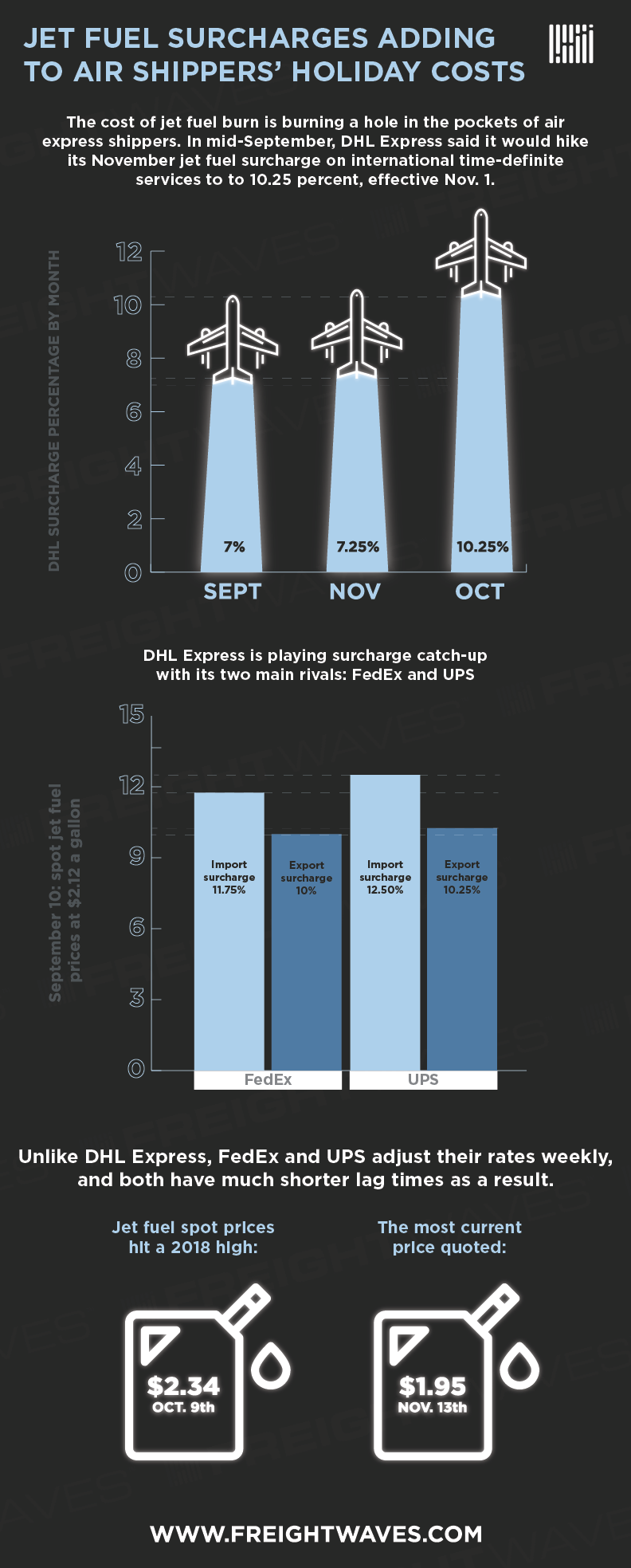
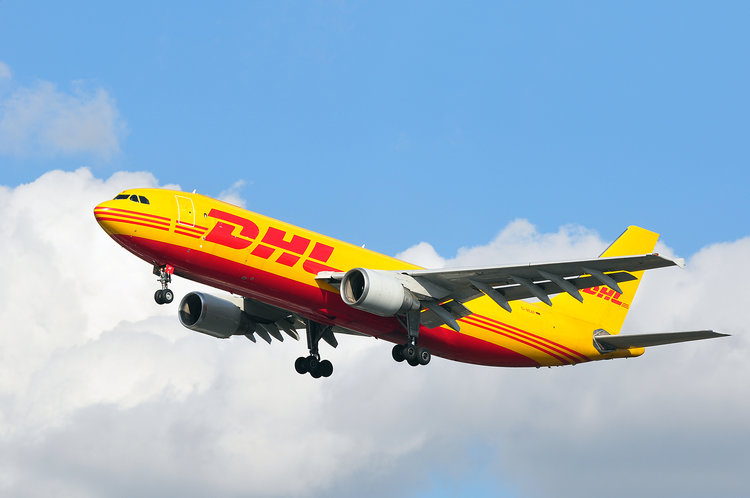
Jet fuel surcharges adding to air shippers’ holiday costs



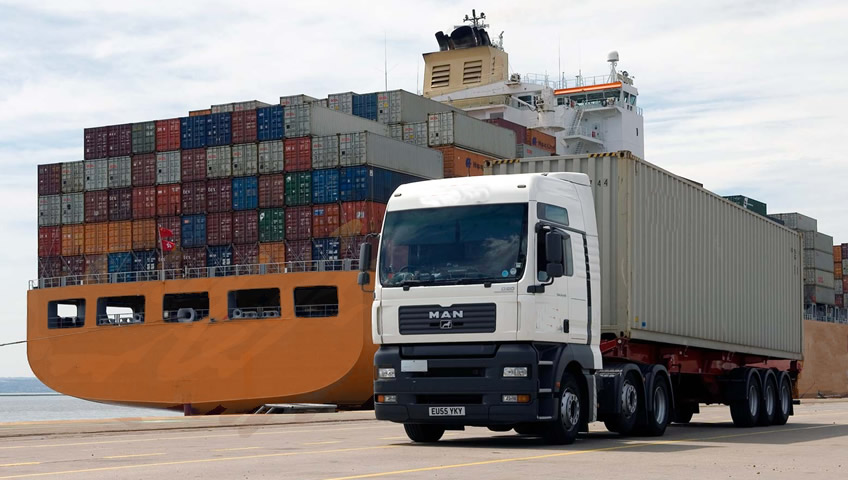
HOUSTON — Tens of thousands of cargo ships, tankers, container ships and cruise liners belch noxious sulfuric gases and fine particles that drift over cities and cover them with smog.
It is not a pretty picture, but it is one that may change in January 2020 if a decision by the United Nations International Maritime Organization to strictly limit the amount of sulfur in maritime fuel is fully carried out.
That is a big if, because shippers have been slow either to make the switch to higher-quality fuels or install expensive equipment known as scrubbers to clean exhaust from what is known in the industry as “bunker fuel.” Oil companies are also watching and waiting, as few have upgraded their refineries to adapt to new regulations.
“It comes down to who is going to blink first,” said Neil Beveridge, an oil analyst at Sanford C. Bernstein, a research firm for investors. “So far, the shipping industry looks like it is sleepwalking into a disaster. Everyone is waiting for everyone else to make the first move.”
Methods of enforcement are also still an open question.
Billions of dollars in investments are potentially at stake, since the global demand for high-sulfur fuel amounts to more than three million barrels a day out of the 100-million-barrel-a-day market, according to industry experts.
Some economists say they believe that prices could be pushed higher when refiners reduce the production of diesel and jet fuel to produce greater quantities of cleaner marine fuel. Other analysts say the market disruption will be modest, in part because initial enforcement of the new rules may be weak.
It has been two years since the United Nations agency firmly established the 2020 deadline to reduce the sulfur content of maritime fuels to 0.5 percent from 3.5 percent, and all major global ports and shipping terminals have committed to using low-sulfur fuels.
The new regulation will not have a significant impact on carbon emissions, but public health experts say a reduction of sulfur gas emissions will reduce smog and avert millions of cases of childhood asthma. One big container ship can emit as much sulfur in a year as millions of vehicles.
Shippers can switch to low-sulfur fuels, installing scrubbers that remove exhaust from high sulfur fuels or switch to cleaner liquefied natural gas. But all three options have disadvantages.
Cleaner maritime fuels can cost $250 a ton more than high-sulfur fuels, which can mean an additional annual expense of roughly $3 million for a large vessel, a significant added cost in the typically low-margin, low-profit shipping business, according to market reports.
A few shippers, particularly cruise ship companies, are building ships that can run on cleaner liquefied natural gas.
But they represent only a tiny fraction of the industry, because installation is expensive and refueling infrastructure still needs to be built in many parts of the world. That is bound to change over the next two decades, analysts say, and the new regulations could be a catalyst.
“L.N.G. is going to be the future,” said Ram Vis, chief executive of Viswa Group, a company that tests maritime fuels and manufactures scrubbers.
Dr. Vis said in recent months he had noticed a jump in scrubber orders. But he added that it would take years for an estimated 30,000 to 40,000 ships to be outfitted with scrubbers because there are only about 30 manufacturers of the equipment worldwide.
Scrubbers can cost $5 million to $10 million apiece including installation, according to the Energy Intelligence group. Dr. Vis said they could take at least 15 days to install, requiring downtime for ships. So far, a small percentage of the global fleet has converted, industry experts said. Shippers may be reluctant to switch because they are concerned that international emissions regulations may be toughened again and that their investment will be wasted.
That leaves the refiners with challenges. The pitch-black and molasses-thick bunker fuel they produce comes from the dregs of refined products. The refiners are not technically included in the new regulations, but they will need to adjust to a new market.
Refining low-sulfur fuel requires additional processing, requiring expensive plant refitting in many operations.
American refineries, which are generally the most sophisticated, are in a strong position to refine more low-sulfur fuel. Chinese and Korean refiners will also be ready. In the meantime, Russian, European and Middle Eastern refiners may need to scramble and make expensive adjustments.
Refiners will be forced to accommodate the expected new demand for cleaner maritime fuel by transferring oil that otherwise would have gone to producing diesel, jet fuel and heating oil, tightening the market for those fuels and raising prices.
“You are going to have to borrow from Peter to pay Paul,” said Tom Kloza, global head of energy analysis at the Oil Price Information Service. He said sophisticated American refiners, including Marathon Petroleum, Valero, Phillips 66 and Exxon Mobil, would profit from the market change. “It’s going to be a magical 2019 and a very profitable 2020,” he predicted.
There still remains the question of how the new regulations will be enforced, since the United Nations agency does not have enforcement powers.
That leaves the policing tasks to port states and flag countries like Panama, which registers vessels but may not be aggressive about monitoring and enforcing rules far from their borders. Shippers may have to be careful about the loss of insurance coverage, reputational damage and stiff fines if they are caught.
Analysts predict that at least 5 percent to 10 percent of shippers will cheat.
“This will have to be a broad-based undertaking for this to be a truly effective global requirement,” said Jose L. Valera, an energy lawyer in the Houston office of Mayer Brown. “If nobody picks up the mantle and makes this a requirement it’s possible it won’t be implemented.”
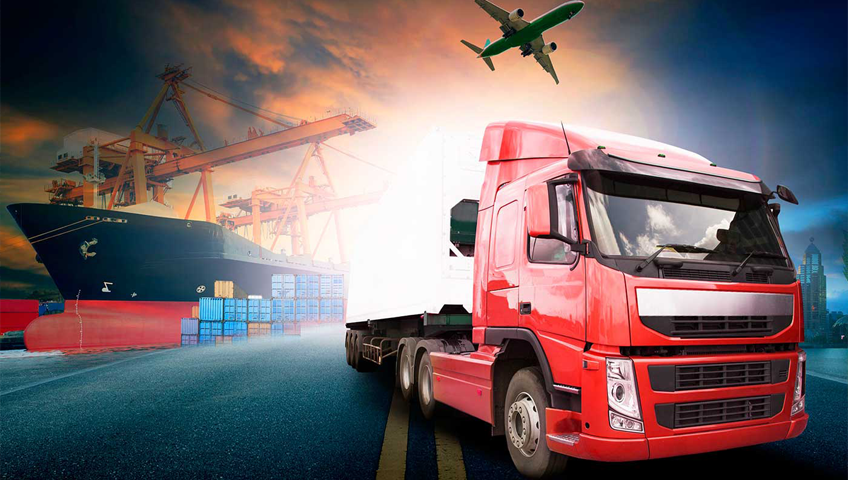
The shipping industry is pushing Congress to increase the size of some shipping trucks, which could affect the nation’s highways, consumers and e-commerce.
Shipping companies like FedEx, UPS and Amazon say allowing so-called twin 33s, a configuration that allows trucks to haul two connected 33-foot trailers, would help increase shipping capacity and lower costs when online sales are booming. Current law limits the trucks to two 28-foot trailers.
But opponents worry the new regulation could be a safety hazard, and opposition from trucking unions and railroad interests have succeeded in delaying changes to existing law.
“These trucks would be at least 84 feet long, and we know that current double trailer trucks have an 11 percent higher fatal crash rate than single trailer trucks,” said Catherine Chase, president of Advocates for Highway and Auto Safety, a road safety advocacy group.
Chase said double trailers are more difficult for drivers to maneuver because the second trailer is more likely to swerve out of its lane and more difficult for drivers to see around with their mirrors.
Truck-related fatalities rose 9 percent in 2017, reaching their highest levels since 2007, she noted. That affects regular drivers as well; when trucks collide with passenger vehicles, nearly every fatality is among the passenger vehicles.
Chase added that many of the nation’s roads and bridges would require improvements to handle an uptick in bigger, heavier trucks.
Sen. Roger Wicker Roger Frederick WickerSenate Republicans demand Google hand over memo advising it to hide data vulnerability Shipping companies want Congress to increase shipping truck size Ricin attacks will continue MORE (R-Miss.) said that he opposed twin 33s on safety grounds.
Roger Frederick WickerSenate Republicans demand Google hand over memo advising it to hide data vulnerability Shipping companies want Congress to increase shipping truck size Ricin attacks will continue MORE (R-Miss.) said that he opposed twin 33s on safety grounds.
“The overwhelming majority of law enforcement officers and other independent safety advocates I have spoken to have expressed significant concerns over these trucks, which are longer than an eight-story building is tall,” Wicker, whose state includes some of the rail interests that oppose the provision, wrote in a letter to The Wall Street Journal.
Wicker cited a Department of Transportation study showing that larger trucks take longer to stop than the current trucks on the road.
Advocates of the longer trucks say that such arguments are superfluous.
“Twin 33s, without adding any weight, can do 18 percent more work with just one truck than an existing set of twin 28s,” said Randy Mullett, executive director for Americans for Modern Transportation, a coalition of shippers and carriers pushing for the new provision.
Adding more capacity to existing trucks, he argued, will lead to fewer trucks on the road, and thus fewer accidents.
Shippers say that the current truck configurations for sending parcels fill up because of bulk, well before they reach the 80,000-pound legal weight limit. The group is not looking to increase weight limits for the longer trucks, he added, meaning that even an increase in weight would fall under current limits.
Shipping groups say that the huge spike in online shopping has made it tougher to efficiently fulfill orders using the so-called less than truckload trucking options available, as opposed to the familiar longer, single-trailer full truckload trailers that tend to transport similar goods to big box stores or distribution centers.
“We’re changing the way we buy as American consumers, and it’s dramatically changed the way we ship small packages,” said Mullett, adding that freight volumes are projected to grow 40 percent in the next three decades.
“We’ve got a lot of areas in the country that are congested. In many areas they’re pretty much maxed out,” he continued.
Increased efficiency, he said, would bring down the cost for consumers while also boosting profits for shippers.
–This report was updated on Oct. 11 at 7:50 a.m.
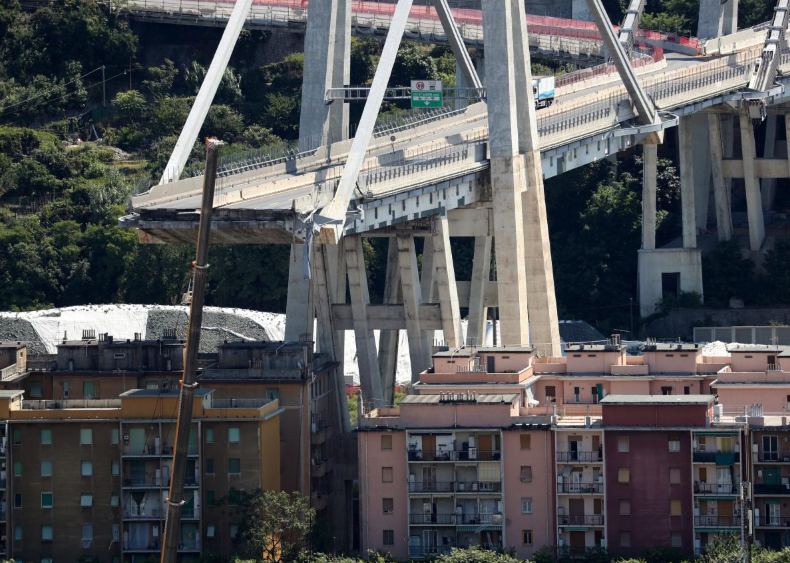
The government has blamed an Atlantia unit, which operated the viaduct that collapsed killing 43 people on Aug. 14, for the disaster. The company is under judicial investigation, along with the transport ministry, for culpable homicide.
The unit, Autostrade per l’Italia, has denied wrongdoing, saying regular, state-supervised inspections had indicated the ageing bridge was safe. A spokesman for Atlantia declined to comment.
The freight forwarders are also looking into lawsuits against the government if the transport ministry is held responsible. The government denies responsibility.
Spediporto, which represents about 330 freight forwarders in Genoa, says trucks are forced to take lengthy detours to and from the port since the collapse of the viaduct, which formed part of a motorway linking the city and its port with southern France.
It fears shippers may choose alternative routes because this means an average shipping delay of more than an hour.
“We have already contacted our legal advisers over the possibility of a collective lawsuit and we will take a final decision in the coming months when we have collected more data over the financial impact of the disaster,” Spediporto director general Giampaolo Botta told Reuters.
The Genoa Chamber of Commerce estimates more than 14,500 businesses were impacted when a 200-meter (660-ft) section of the viaduct collapsed, including the container port which generates around 1.5 percent of Italy’s gross domestic product.
It has started asking firms across the city to estimate the impact of higher transport costs arising from road detours and port delays. So far, it has spoken to 1,400 firms, said spokeswoman Anna Galleano.
The survey is aimed at helping firms claim relief from state disaster-aid funds but the data could be used in future law s. She said the chamber had not sought legal advice “for now”.
Civil lawsuits could take months to emerge but would pose an extra financial threat for Atlantia. Rome has already moved to revoke its national toll-road concession, worth 3.9 billion euros ($4.5 billion) a year, and threatened it with heavy fines.
Autostrade has set aside 500 million euros to offer initial support to families and small businesses and also to rebuild the bridge, but the chamber said early evidence suggested the total damage could be much higher.
“You can easily expect that the 500 million euros will be multiplied by four, reaching 2 billion euros,” Chamber General Secretary Maurizio Caviglia told Reuters.
Any civil suit would have to wait until prosecutors wrapped up their investigation and could also be aimed at the transport ministry, if it was found to be culpable in its role as supervisor of safety on toll roads, said lawyer Lucio Galino.
Under the Italian law, if prosecutors took Atlantia or the transport ministry to trial, businesses could file for damages with the same court. The trial judge could at the time of sentencing award provisional damages to those businesses.
The government could also take legal steps. At a recent meeting in Genoa, state lawyers asked government representatives and local officials to keep records of extra emergency work and be ready in case it tries to claim damages against Atlantia, two sources familiar with the matter said.
(This version of the story was corrected throughout to explain Spediporto is the association of freight forwarders and not ship agents)